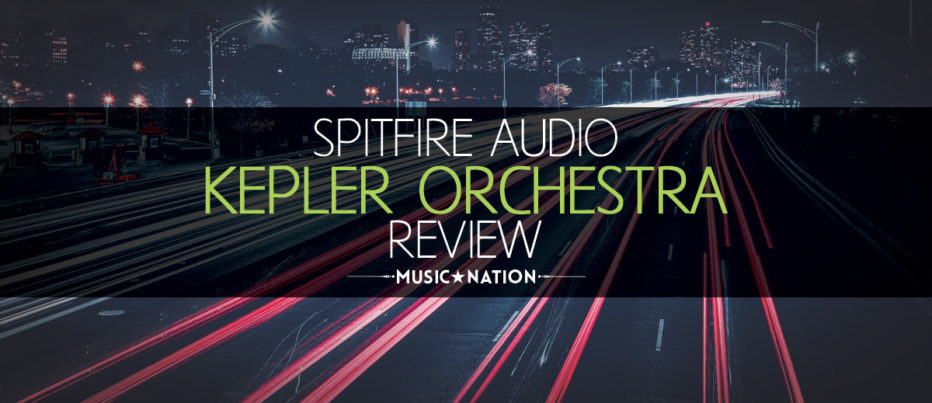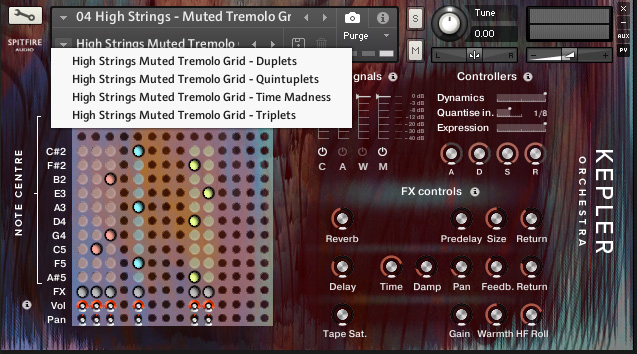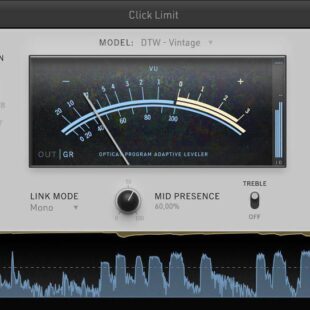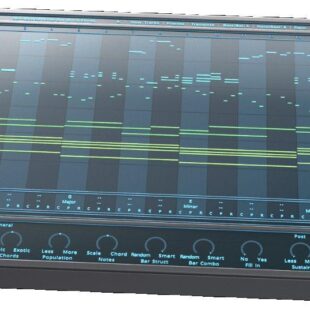SPITFIRE AUDIO KEPLER ORCHESTRA – HARMONIC MOTION
Welcome to Music Nation. This week we are diving headlong into Spitfire Audio’s latest title, Kepler Orchestra. Though new libraries have lately been coming thick and fast from Spitfire, Kepler Orchestra promises a rather innovative retooling of the popular EVO Grid system.
Spitfire Audio are quickly becoming one of the most prolific developers of sample libraries in the market, with a major release almost every month. Kepler Orchestra goes in a rather left-field direction this time, following the recent trend of adverse EVO Grid titles.
Overview
Kepler Orchestra is a Kontakt 5-based sample library usable in both the free and professional versions and weighs in at around 35GB fully installed.
Once purchased you will need to install the Spitfire Audio Manager, a gatekeeper for all your purchased libraries and updates. The software handles all the downloading and installation duties, with registration and authorisation done through the Native Access app.
System requirements are varied, depending on how you use the library. The bare minimum is a modern PC/Mac with 8GB RAM, but as with all high-end sample libraries, we highly recommend an SSD drive and 16GB RAM if you want to use the full potential of the library.
The library consists of a 72-piece ensemble; 40 strings, 13 woodwind and 19 brass recorded at Lyndhurst studios in London. A total of 54 note styles are included with 259 various snapshot presets to get you started.
First Playthrough
My first impressions of the interface are good. Previous EVO Grid libraries have looked quite shabby with low-resolution buttons and articulation posts, but everything in this new edition looks sharp and easy to read.
Kepler Orchestra has a smaller than usual selection of microphones, but a good choice from close, ambient and wide. A DSP-friendly ‘Mix’ alternative for all patches is included. This has just a single premixed output, which is a setting I found very adequate for most requirements.

The orchestra has been recorded quite dry so the mics don’t add a drastic amount of ambience. My go-to 80% close with about 50% ambient mic mix sounds perfectly adequate for everything I tried.
A selection of snapshot presets is included for each patch and are well worth browsing through. Some of the clever combinations really showcase the flexibility of the library well.
Spitfire’s EVO Grid engine appeal to one-finger composers due to the rather random nature of the results, usually pairing up with more traditional sample libraries well as part of a layer or texture. Kepler is quite different in that it is rhythm-based so more thought needs to be put into producing a coherent performance.
Usually, EVO Grid library patches are catalogued by sound themes, often ranging from subtle to extreme. Kepler patches are single-themed and internally separated by note-timing values. It is a totally flipped workflow, though it retains the “gridness” we all know and love.
Power Grid
Kepler Orchestra is a one-shot type system, meaning you can only run the single rhythm pattern with variations coming mostly from playing notes at different timings. While this might be interesting, it is very unlikely an orchestral arrangement will only use the same, repetitive loop throughout the piece, meaning some frustrating workarounds.
Initially, I thought this was an expanded version of the Ostinatum arpeggiator included with most Spitfire Libraries. In essence, it does the same thing, but there are some major differences.
Firstly, the Ostinatum can only play short notes whereas Kepler is not as limited by note duration. There are also a lot more styles included, such as momentum, tremolo, shards and dopplers, all impossible in the Ostinatum.
Kepler has a quantisation function built-in which forces MIDI input to the closest beat. In testing, I found this quite impacting on system resources, especially once I had five or six instances running at once. You can simply disable this function if you’re sequencing and using your DAW’s quantisation to align notes.
The Ostinatum, however, is capable of rhythm swapping, which is a big drawback with Kepler Orchestra.
A workaround is to duplicate the instance and assign unique MIDI numbers (and hope you don’t ever need more than 16 rhythms in your arrangement), or to hard-bounce the output to a wave file as you go along and build up a selection of rhythms manually.
You are able to split the rhythms across your keyboard, but unfortunately, you cannot assign the note pitch, meaning the lower section will play a different rhythm to the higher. While this is usable, it’s not ideal if all you want to do is change the rhythms and leave the note pitch intact.
Kepler is massively outclassed in this area by other libraries like Action Strings and The Orchestra. While they do not offer detailed recordings, they are vastly more playable with all the rhythmic patterns you could need on hand as key switches.
The Sound
The library patches are separated into variations of the four main categories; Grid, shards, momentum and dopplers, with a fifth warped category for decorative textures. Each core category contains the same note subdivisions, separated into columns (duplets, triplets, quintuplets and septuplets). These columns are further separated into peg holes from slowest to fastest, tempo-locked to your DAW.
The main Grid patch is short staccato through to longer bowed notes, depending on the note division chosen. Muted and Sul Pont options are included.
Shards are described as rays of light passing you, and I can hear the analogy when played. Synth guys know them simply as triangle saw waves: an effect the orchestra performs by bowing a note in intensity and then stopping quickly.
Momentums are simple crescendos with a pulsing alternative that change in both pitch and tempo.
Dopplers emulate the effect when sound comes towards you and passes, like a car for instance. The volume rises and then the pitch drops significantly as the car passes by.
The fifth Warped category included contains decorative single non-grid patches with flipped and mangled variations of the core instruments using the Mercury Synth. These sound a little lacklustre on their own but really bring arrangements to life when overlaid as textures.
Since the orchestra has been recorded very dry there is plenty of freedom to match ambiences to other orchestral libraries you are using. The orchestral tone, in general, reminds me of Spitfire’s Bernard Herrmann Toolkit. It has an organic woody, slightly raspy sound.
High strings are perhaps the harshest, particularly in the lower range, though the basses and celli sound wonderfully full with plenty of deep growl if needed.
The brass sections are fantastic, both work very well with the EVO system. The high brass isn’t as high as I was expecting, more like mid brass. Together the sound is very heavy, almost overbearing, but in a good way.
The woodwinds section mostly sounds very nice, with a stronger vintage tone than the rest. The core grid presets are a little too jarring for my taste but the momentum sounds spot on and is probably my favourite part of the library.
I must strongly recommend you play with the snapshot presets available for each patch. These really showcase each of the styles well, in particular, the Warped category which provides many variations for each patch.
Conclusion
Spitfire Audio products have a high degree of production quality. So ultimately I look for how flexible and functional a title is in my workflow. On this level, Kepler Orchestra misses the mark.
As a one-shot loop player Kepler works well, though titles like Maximo. The Orchestra or Action Strings provide infinitely more flexibility with their ability to change rhythms on the fly. There are ways to emulate these competing products, but creating workarounds is counter-intuitive and frustrating.
The library works well as a chaos generator of sorts. Combining off-beat rhythmic patterns is interesting, but for me mostly impractical.
The library slots in nicely with others thanks to the dry recordings. Though I struggled to write a piece purely for the Kepler library, its randomness is just too chaotic to rein in. However, I found it a perfect complement to other orchestral libraries in my arrangements when used sparingly here and there.
To this degree, I think Kepler Orchestra’s greatest strength is as a supporting role to more dominant traditional orchestral libraries. It can indeed be a soloist, but it just naturally falls in behind as texture livens up and add movement more interest.
Kepler Orchestra is an ambiguous but imaginative adaptation of the EVO Grid system. It creates a variation that I could see nicely adapted to other instruments. This is not an essential composing tool, but certainly, one that brings more life to your arrangements. If you are looking for a straight ostinato player there are much better (and cheaper) options out there. But in its place, Kepler Orchestra fills a role and is a fascinating addition to the Spitfire Audio catalogue.
For full details and purchasing options on Spitfire Audio’s site www.spitfireaudio.com

Like the review? Shout us a cup of coffee!








